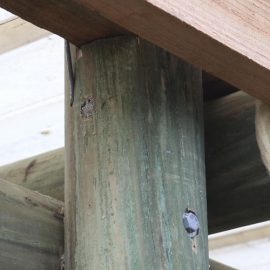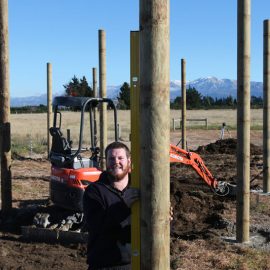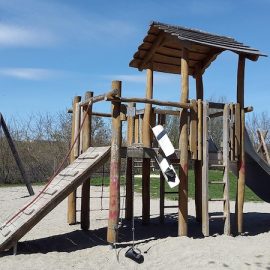
When it comes to building a retaining wall that lasts, choosing the right pole is just as important as the design itself. The Pole Man knows that a well-chosen, properly treated and sized pole can make all the difference between a wall that holds firm for decades and one that fails under pressure.
Here’s what you need to know to select the right pole for your retaining wall project.
1. Understand the function of your wall
Before you even look at poles, determine the purpose of the retaining wall:
- Is it decorative, or is it holding back tonnes of earth?
- How tall will it be?
- Will it be exposed to heavy water runoff or erosion?
The more structural load your wall will bear, the stronger your poles need to be.
2. Choose the right length and diameter
The pole must extend deep enough into the ground to support the pressure from behind the wall.
General guideline: A retaining wall post should be at least 1/3 of the wall height longer than the wall itself.
For example, a 1.2m high wall needs poles around 1.8m in total length.
Pole diameter also matters. Larger diameters offer greater strength and stability. For load-bearing walls, 200-250mm diameter poles are commonly used, while 150mm may be fine for lighter applications.
It pays to remember that a 200mm diameter pole that is otherwise the same as a 150mm diameter pole is over three times stronger (in bending strength) even though there is only a 33% increase in diameter. A 250mm diameter pole is 2.4 times stronger than an otherwise same 200mm pole, considering it is 25% larger in diameter.
3. Select the right timber and treatment
At The Pole Man, we supply lathe-turned poles for consistency, strength, and aesthetics.
But just as important is the treatment: H5-treated poles are ideal for ground contact and outdoor structural use, and they’re perfect for retaining walls.
Ensure the treatment penetrates deeply and evenly (all our poles meet NZ timber treatment standards).
Ask for documentation if you’re unsure. Not all poles are treated equally.
4. Consider load direction and spacing
Poles for retaining walls act like buried cantilevers. To ensure they don’t bow or break:
- Space poles no more than 1.2 to 1.5 metres apart, depending on the wall height and soil load.
- Use proper backfill techniques with drainage aggregate and weep holes to reduce pressure behind the wall.
5. Customisation Pays Off
Standard poles such as those from large timber merchants aren’t always the best fit, especially for uneven terrain, specific engineering specs, or when matching existing structures.
At The Pole Man, we produce custom-sized, precision-turned poles to match your exact needs. Whether it’s a sloped site or an engineered wall plan, we’ll cut and finish your poles to spec.
Build It Right the First Time
Retaining walls are not something you want to rebuild in five years. Investing in the right pole, treated, sized, and cut properly, is one of the smartest decisions you can make.
Need help choosing the best pole for your project? Contact The Pole Man today or request a custom quote online from donscott999@gmail.com.


